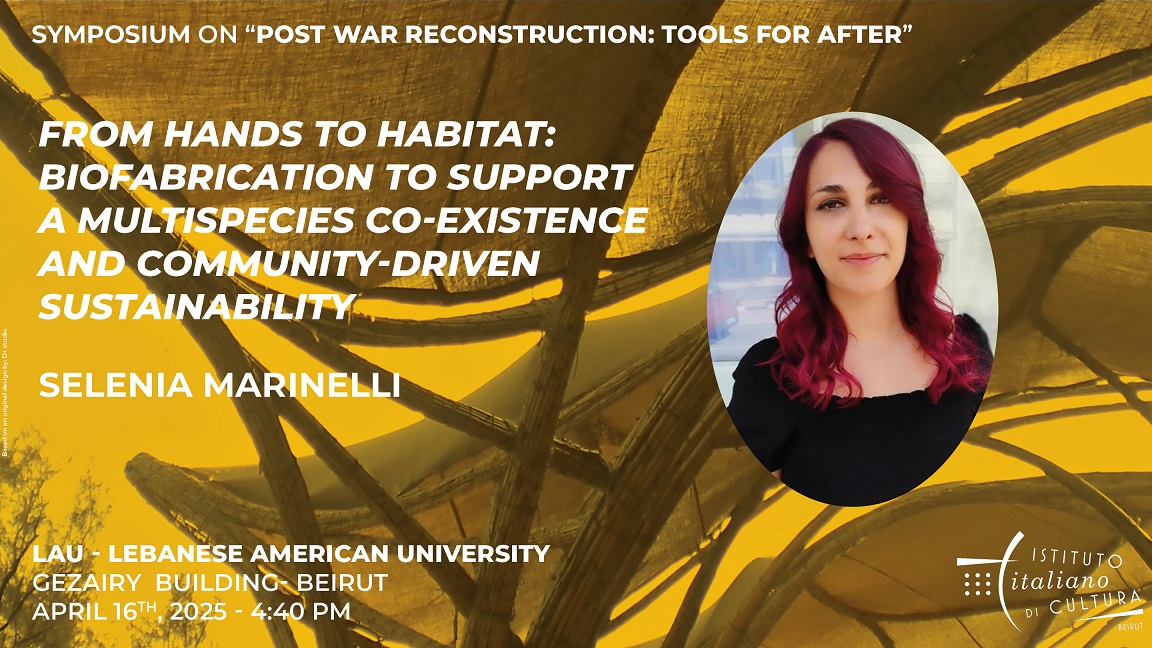SESSION I
SUSTAINABLE CITY
April 16, 2025 – 4:40 pm / 5:00 pm
FROM HANDS TO HABITAT: BIO-FABRICATION TO SUPPORT A MULTISPECIES CO-EXISTENCE AND COMMUNITY-DRIVEN SUSTAINABILITY
ABSTRACT:
The lecture will focus on my research as a bio-architect and material activist. By embedding sustainable practices into hands-on experimentation, my work promotes cross-disciplinary dialogue to foster innovative approaches in architecture and design, inspiring new aesthetics and sparking reflections on living in “bio-informed” spaces — ultimately contributing to the creation of regenerative habitats which support human and non-human co-habitation. The objective is twofold: to empower communities to shape their environments through DIY labs and on the other hand to develop sustainable biomaterials derived from biological residues, as alternatives to traditional construction materials.
Objective 1 — Empowering communities: Engaging communities, especially younger generations, in material creation invites collective stewardship and shared responsibility for local ecosystems. This approach redistributes knowledge and agency to cultivate an accessible, inclusive practice through sensory-based learning. By connecting people intimately with the materials they co-create, this approach transcends conventional sustainability education, fostering embodied, empathetic, and eco-conscious mindsets — a shift from “ego” to “eco.”
Objective 2 — Producing biomaterial prototypes: My research also investigates biofabrication as a tool to encourage reflections on the construction sector’s impact over ecosystems, specifically exploring food residues as resources for construction. SeaCrete, for example, is a series of bio-tiles made from reclaimed shells and draws inspiration from the fishing and mussel farming tradition of my hometown, Taranto. This production has been a cornerstone of the local economy for centuries, generating significant waste. However, molluscs’ shells, composed of over 90% calcium carbonate, represent a viable alternative to cement-based materials — potentially reducing extraction activities and lowering construction’s environmental footprint.
SELENIA MARINELLI – BIOGRAPHY
Bio-Architect Ph.D, Independent researcher and Material Activist. By adhering to a posthumanist and material feminist approach, the objective of her research is to redefine architecture as a place of co-existence between human and non-human inhabitants. For this reason, Selenia conducts as independent researcher a hands-on experimentation with the DIY creation of biomaterials, to promote material activism through a transdisciplinary material design approach. Together with more functional applications, her work with biomaterials also aims at stimulating artistic and speculative scenarios and it was showcased in different exhibitions.
From 2021 she works for FVA – New Media Research as Project Manager in EU funded projects focused on the sustainable circular bioeconomy and sea protection.
Keywords: bio-informed spaces; multispecies coexistence; posthuman material feminism;




